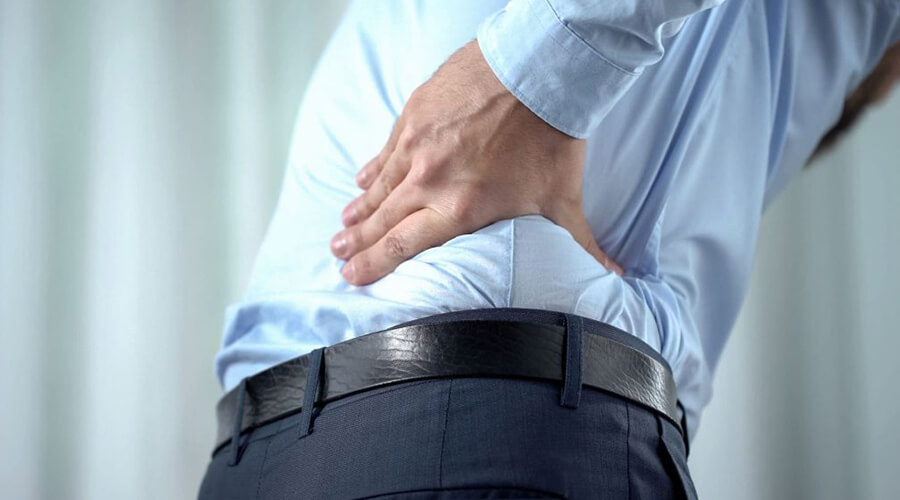
Sometimes the pain in the back makes you almost immobile.
Back pain can be caused by almost any physical exertion, but it doesn’t even need to be exerted, just one wrong movement and it’s gone.
It is called lumbar pain. Interestingly, the Germans call lumbago hexenschuss, or witch shot. Because the sharp pain is a sudden and unexpected blow to the back.
But what is a lumbago?
It is a short name for a sudden onset of pain around the waist and sacrum. The pain is mainly caused by a spasmodic twitching of the muscle and is not usually radiated. Unfortunately, this pain very often forces the person into a rigid posture.
Lower back pain is the most common musculoskeletal complaint. It can occur in both old and young age. According to official statistics, 80-90% of adults are affected at least once in their lifetime.
But what are the reasons?
One reason for this high proportion is that everyone is sitting more and more for work and even in their leisure time. Improper posture is also a major cause. The greatest strain is caused by prolonged bending forward, or by one or more bouts of heavy physical exertion. Working in a forward bend for long periods of time and sitting hunched over has a very negative effect on the waist.
I’ve pulled my waist, what can I do?
If you’ve pulled your back, it’s important to rest the injured area and manage the pain and inflammation properly.
Here are some tips on how to treat a pulled back at home:
Rest your back: avoid lifting heavy objects and excessive activity in the injured area. Try to sit or lie comfortably to reduce tension in your back.
Warming wraps: Warming wraps can help reduce pain and relieve stiffness. Apply a heating compress to the injured area for 15-20 minutes, then take a break for 20-30 minutes and repeat.
Cold compresses: cold compresses reduce inflammation and relieve swelling. Apply an ice pack to the injured area for 15-20 minutes, then pause for 20-30 minutes, then repeat.
If pain has already developed, the spine should be unloaded and the pain reduced.
The fetal position and lying on your back are also very good weight-bearing postures. Physiotherapy can also help a lot with lower back pain. Strained waist can also be treated with herbal balms, as herbs have great anti-inflammatory and analgesic properties.
When the symptoms go away on their own, many people don’t go to a physiotherapist or doctor, even though it’s worthwhile to do so after the pain has gone.

